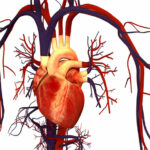‘ULTRA-PROCESSED FOODS’ – ANOTHER RED HERRING?

It’s nothing new to demonise food processing. As a student of food science and nutrition, I read on one hand that food processing was necessary, helping to preserve foods and prevent food wastage, while on the other hand, it was a necessary evil that stripped foods of important nutrients. Milling of wheat grains into white flours was a prime example because a large proportion of the vitamins and minerals are in the aleurone layer just under the bran. On the whole, however, food processing had enormous benefits in safety and availability that allowed large cities and civilisations to prosper.
Today, a new system of classifying foods according to four levels of processing takes industrial processing to new heights of fear (Table 1). In this classification, the least processed food is called ‘minimally processed’, while the most highly processed is called ‘ultra-processed’, and the system is garnering support (1).
Table 1. The NOVA Classification of Foods

| Category | Description |
| 1: Unprocessed or minimally processed | Unprocessed or minimally processed Unprocessed: edible parts of plants or of animals, fungi, algae and water Minimally processed: unprocessed foods altered by industrial processes such as removal of inedible or unwanted parts, drying, crushing, grinding, freezing etc… that do not add salt, sugar or other substances. This group includes minimally processed foods that contain additives that prolong storage life or prevent spoilage by microorganisms |
| 2: Processed culinary ingredients | Processed culinary ingredients Substances obtained directly from Category 1 or from nature by industrial processes such as pressing and refining. May contain additives that prolong storage or prevent spoilage. |
| 3: Processed foods | Processed foods Products made by adding salt, oil, sugar or other Group 2 ingredients to Group 1 foods using preservation methods such as canning. This category includes breads and cheeses. May contain additives that prolong storage life or prevent spoilage. |
| 4: ‘ultra-processed foods’ |
‘ultra-processed foods’ Formulations of ingredients, mostly of exclusive industrial use, many requiring sophisticated equipment, such as fractionation, chemical modification, high temperature extrusion, frequent use of additives whose function is to make the final product more palatable (e.g., flavours, colours), or more convenient |
- Monteiro and colleagues. ‘ultra-processed foods’: what they are and how to identify them. Public Health Nutr. 2019.
- Gibney and colleagues. ‘ultra-processed foods’ in human health: a critical appraisal. Am J Clin Nutr. 2017.
- A collection of photographs by Miss Irene Brown from the archives of the Hay Historical Society.
Professor Jennie Brand-Miller holds a Personal Chair in Human Nutrition in the Charles Perkins Centre and the School of Life and Environmental Sciences, at the University of Sydney. She is recognised around the world for her work on carbohydrates and the glycemic index (or GI) of foods, with over 300 scientific publications. Her books about the glycemic index have been bestsellers and made the GI a household word.








